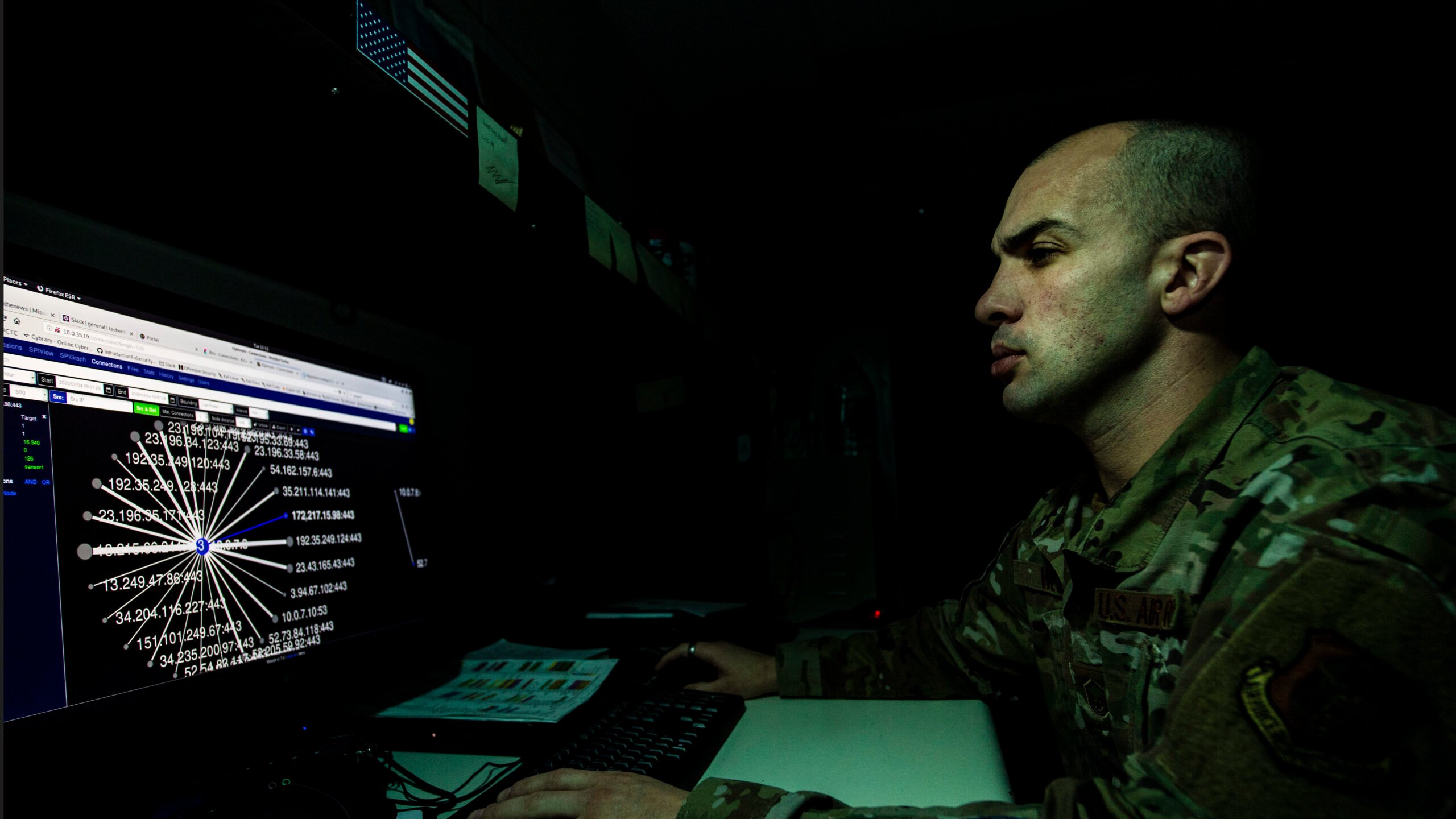
Transforming data from abstract, machine specific outputs to useful, shareable, information across machines is a goal of the new Department of Defense Data Strategy. (Joshua J. Seybert / Air Force)
WASHINGTON: Following complaints made earlier this month by the Army’s top acquisition official about the Pentagon’s disparate Joint All Domain Command and Control efforts, the Air Force’s principal cyber advisor today added her voice to the calls for a centralized JADC2 office.
The military services each have their own independent JADC2-focused paths: The Army hosts its annual Project Convergence sensor-to-shooter “learning campaign” in the Arizona desert, the Navy has its own Project Overmatch and the Air Force has its Advanced Battle Management System.
Speaking at a panel at the Potomac Officer Club’s Air Force Summit on Tuesday, Wanda Jones-Heath, principal cyber advisor for the Air Force and Space Force, said between those three efforts, no one is thinking about how to be interoperable and that “someone needs to just push us where we need to go.”
The Defense Department currently has a JADC2 Cross-Functional Team (CFT) designed to help ensure requirements are met and to deconflict between the services. But Jones-Heath believes the CFT itself, which is designed to phase itself out in a few years, isn’t driving the amount of interoperability DoD needs.
“How much are they driving to make sure there is interoperability and that we get the capabilities that we need, putting those programs side by side and just figuring out what capability can each service bring, what are the best of the breed of the different capabilities, and then how do we integrate those?” she told Breaking Defense at the sidelines of the summit.
Doug Bush, the assistant secretary of the Army for acquisition, logistics and technology, made similar comments on July 11 where he proposed a joint JADC2 office that could potentially help prioritize where DoD makes investments.
As a model for what that JADC2 office could look like, Bush pointed to the Joint Counter-small Unmanned Aircraft System Office (JCO), which is overseen by the Army.
“So that kind of organizing body there could be useful in terms of making sure requirements are actually stacked and prioritized and given to the services,” Bush said at the NDIA JADC2: All Domain Warfare Symposium. “They’ve also been influential in, for example, working on when there’s an urgent need, making sure that the system responds with the reprogramming…making sure we buy what’s urgently needed. That wouldn’t have happened if it was just the services by themselves.”
Bush also proposed a large joint exercise involving each service’s JADC2 contributions. Jones-Heath said today that even with current joint exercises — including this fall’s Project Convergence, the first joint iteration of the exercise involving the Army’s coalition partners — DoD needs to do more.
RELATED: At NetModX Experiments, Army Takes On Contested Communications
“I think we have some work to do on that and being able to have an all-service team and then pushing us to the capabilities that we need to develop individually and then test it…having a test function integrated as part of the overarching process on a continuous basis,” Jones-Heath said.






















